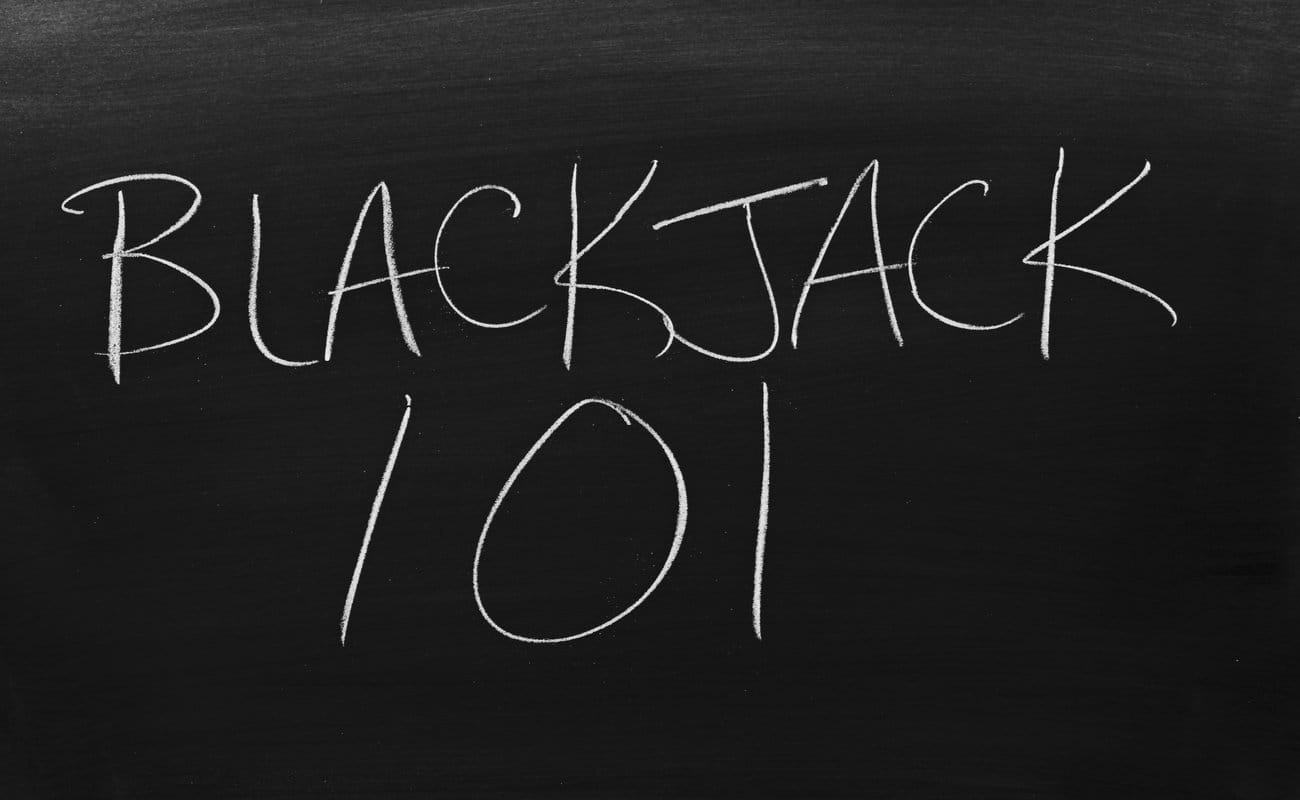
Blackjack is one of the most popular online casino games in the world, not least because it’s widely available, easy to learn, great fun to play and incorporates an element of skill. Many of us know there’s a real knack to hitting 21 without going bust, but if you’re a complete beginner, this may not make sense.
Let’s begin by discussing the fundamentals of this timeless game. Blackjack is a card game where you face off against a dealer. The game utilizes a standard deck of 52 cards with four suits: clubs, spades, diamonds and hearts. It’s worth noting that the suits are inconsequential to blackjack; the focus is solely on the numbers.
Blackjack is known to be a simpler card game to learn compared to, say, live dealer casino games like online poker. Blackjack has quicker hands with more immediate wins and losses. Each hand requires a minimum of two cards, as opposed to five. Like poker, blackjack is a game of strategy that requires some skill if you’re going to beat the dealer — although, of course, there is a fair deal of luck involved, too.
If you’re looking for a thorough introduction to blackjack, you’ve come to the right place. This guide offers a complete and comprehensive overview of the game. It delves into the origins of blackjack, provides guidance on playing your hand effectively, advises on decision-making, shares the best strategies, discusses betting techniques and covers the appropriate blackjack signals and etiquette.
Whether you’re a novice or an experienced player, there’s always room to enhance your knowledge and refine your skills. The deeper your understanding, the more enjoyable your playing experience becomes. Let’s start with a bit of blackjack history.
Origin of Blackjack
Blackjack is the successor of a game called veintiuna, which is Spanish for the number 21. The first documented example of the game is in Miguel de Cervantes’ Rinconete y Cortadillo. The author of Don Quixote wrote a story about two gamblers playing veintiuna. The game involved getting closest to 21 and, like modern blackjack, was played with an ace valued at 1 or 11. The novella was written between 1601 and 1602.
During and after the 19th century, the early iteration of the game began to split into two distinct versions, each acquiring its own name. In England, the game took the form of “pontoon” and gained popularity during World War I when it was played by soldiers in the trenches of Europe, much like poker.
In the United States, gambling establishments sought to generate interest in veintiuna by increasing the stakes. One widely adopted and renowned payout was a 10-to-1 reward if a player held an ace of spades alongside either the jack of spades or the jack of clubs — the two black jacks in a standard deck of cards. This particular hand became commonly referred to as “blackjack.” The name caught on and “blackjack” rose to prominence throughout the United States.
While the gambling houses eventually discontinued the 10-to-1 payout and the rule that exclusively recognized black jacks as picture cards, the name of the game remained intact and is now used worldwide. Although blackjack has evolved over the years and undergone various adaptations, the core goal of the game still closely resembles its original counterpart of reaching a total of 21.
How Does Blackjack Work?
Blackjack is a fun casino table game that can also be played online. Regardless of whether you’re at a brick-and-mortar casino or playing online, you’re bound to have a lot of fun playing this classic game!
While there are many different versions of the game, this guide will unpack blackjack 101 and basic strategy, rules and gameplay.
Blackjack is usually played with a 52-card deck and aces can be counted as either 1 or 11, while cards 2 to 9 are counted at face value. Face cards (jack, queen and king — of either color) and 10s each count 10 points. A player’s hand is calculated by the sum of the values of the cards. A “blackjack” is a hand with the perfect score of 21 that’s formed with an ace (counting here as 11) and a 10-point card. That sounds simple enough, but there are nuances to the game, especially when it is played online or in a casino.
The main thing to remember is that you’re playing solely against the dealer and you’re aiming to end up with a hand that’s closer to 21 than that of the dealer. If either of you goes over 21, that hand is “bust.” If it’s you, then you’ll lose your bet; if it’s the dealer, they’ll lose and your bet will be successful.
In a nutshell, if you’re playing blackjack, you need to remember that, unlike other casino games, this one isn’t a team effort — there are no other opponents except the dealer. Depending on your personality and strengths, this can be to your advantage or disadvantage.
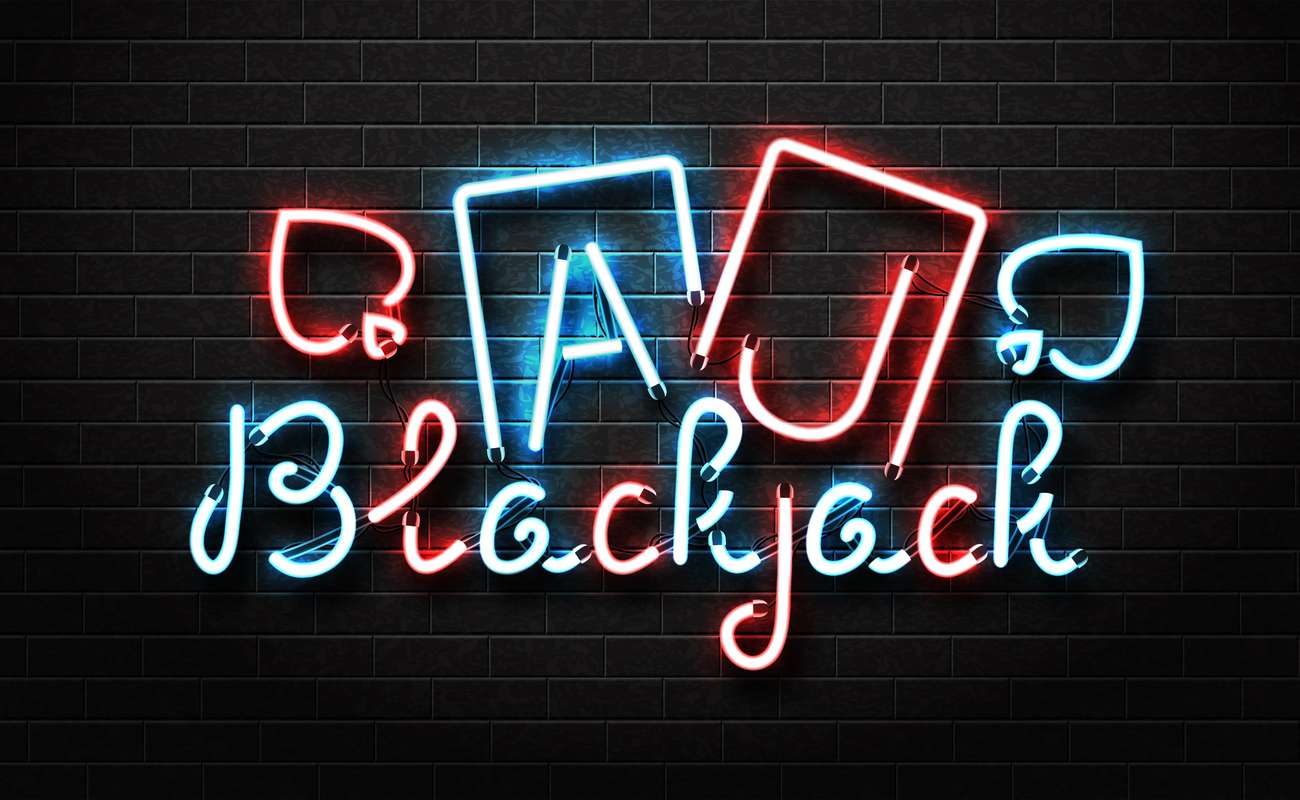
How Does the Game Play Out?
Before cards are dealt, all players must place their minimum bet. Most casinos will set a minimum and a maximum bet. After the players have placed their bets, the dealer will distribute two cards (face-down) to each player and two cards to themselves. One of the dealer’s cards is face-up, the other face-down. The face-down card is called a “hole card.”
The game then begins with the player to the dealer’s left and goes around clockwise. Each player faces several options. If they think they are as close to 21 as they are going to get, they can “stand,” which means they don’t want any additional cards. A player can also “hit,” which means they ask the dealer for another card (or more if they want.) If the drawn card or cards cause the player’s hand to exceed 21, he or she “busts” and loses. In this way, you can try to build your hand toward 21 but just as easily go bust. One of the recommended blackjack tricks is to get as close as possible to 21 and then “stand!”
A player can also “double down” their bet, which means they are only allowed to draw one more card. Meanwhile, if they are dealt a pair, they can “split.” In this situation, they can double their bet and break the cards into two separate hands. The dealer will give each of these cards a second card. Each of these moves during the game is discussed in greater detail in the next section.
After all the players have had their turns, the dealer will flip over their “hole card” for all to see. The dealer will then draw cards in an attempt to get to 21 without busting. Most casinos have house rules that stipulate the dealer must “stay” (or “stand”) if their hand is 17 or higher, which ensures they remain cautious in their play. If the dealer goes “bust,” then any player at the blackjack table who did not go “bust” officially wins against the dealer! If the dealer doesn’t “bust,” then any player (including you) whose hand has a higher total card point value than theirs, wins. In most casinos, if it’s a tie (or “push,”) then neither you nor the dealer wins and your bet will be returned.
While it may seem that it comes down to the luck of the draw, there are actually many ways to play blackjack strategically. The decisions you make with your hand will reveal your level of experience and whether you realize when you’ve made a mistake.
Making Decisions in Blackjack
Decision-making is a key part of playing blackjack. In fact, some might even say that the charm of the game exists in the strategic decision-making it requires. For experienced players, this can be a welcome challenge, but for beginners or novice players, it can be quite daunting. That needn’t be the case. Let’s take a closer look at what making decisions in blackjack entails and how it impacts your gameplay.
There are four general player decisions in a round. They are to “hit,” “stand,” “double down” and “split.” Some casinos allow a fifth decision — to “surrender” — but this option is only available if it is explicitly stated before the game. All decisions are indicated by signals which are governed by etiquette and determined by the blackjack variant you’re playing.

How To Hit
You might recall a memorable scene from a movie featuring a blackjack player in a casino, confidently uttering the words “hit me!” to the dealer while spectators gasp in excitement as the character defies the odds. However, in reality, this verbal request is actually considered poor etiquette.
Essentially, when you “hit” in blackjack, you are asking the dealer for another card to increase the value of your hand, aiming to get as close to, but not exceeding, a total of 21. To indicate your desire for a “hit” from the dealer, there are different signals to employ based on your initial two cards.
In a physical casino where the dealer has dealt your cards face-down, you typically have the cards in your hand. In this situation, you signify a “hit” by lightly scraping or sliding your cards against the table.
Conversely, if you are playing a blackjack game where the dealer has dealt your cards face-up, there is no need to keep your hand concealed. In this case, you can simply tap your index finger on the table. Some casinos may also allow you to wave your hand toward your body as a signal for a “hit.”
In online blackjack games, it’s much more straightforward. There will generally be a button called “hit” that you can just click on to hit and receive an additional card. Easy!
How To Stand
Sometimes, your first two cards are all you need to win. If you think you have a winning hand, there is no need to hit and receive an additional card that could make you go bust. In this case, you’ll “stand,” though, in some casinos, you’d say “stick” or “stay” instead.
In a real casino, if you’re playing a game variant where the dealer has dealt your cards face-down, you’d slide your cards under the chips you staked.
Alternatively, if you’re playing blackjack where your cards have been dealt face-up, you’d wave your hand horizontally over your cards.
In an online blackjack game, you’d simply click on the “stand” button to stick with what you’ve got and you’ll not receive any additional cards.
Hit and stand are the basic ways in which you can manage the number of cards in your hand. These are the core gameplay decisions of the game. There are, however, additional decisions to be made — understanding them will help you to maximize your winnings. Let’s have a look at these.
How To Double Down
“Double down” is a way to maximize your winnings if you’re lucky enough to be dealt a really strong hand. You can only double down after you’ve received your initial two-card hand. To double down, blackjack players agree to double their initial bet in return for an additional card. If their three-card hand beats the dealer and doesn’t go bust, the dealer will pay out 1 to 1.
Whether you’re playing blackjack with your hand dealt face-up or face-down, the signal to “double down” is roughly the same if you’re playing in person. You place your additional bet alongside your initial bet — but outside the betting box — and raise one finger. If your hand was dealt face-down, you’ll turn over your cards before lifting your finger.
In an online game of blackjack, there is usually a “double down” button to press after your hand has been dealt. This will only be available after the initial deal. Thereafter, you won’t be able to “double down” on a hand.
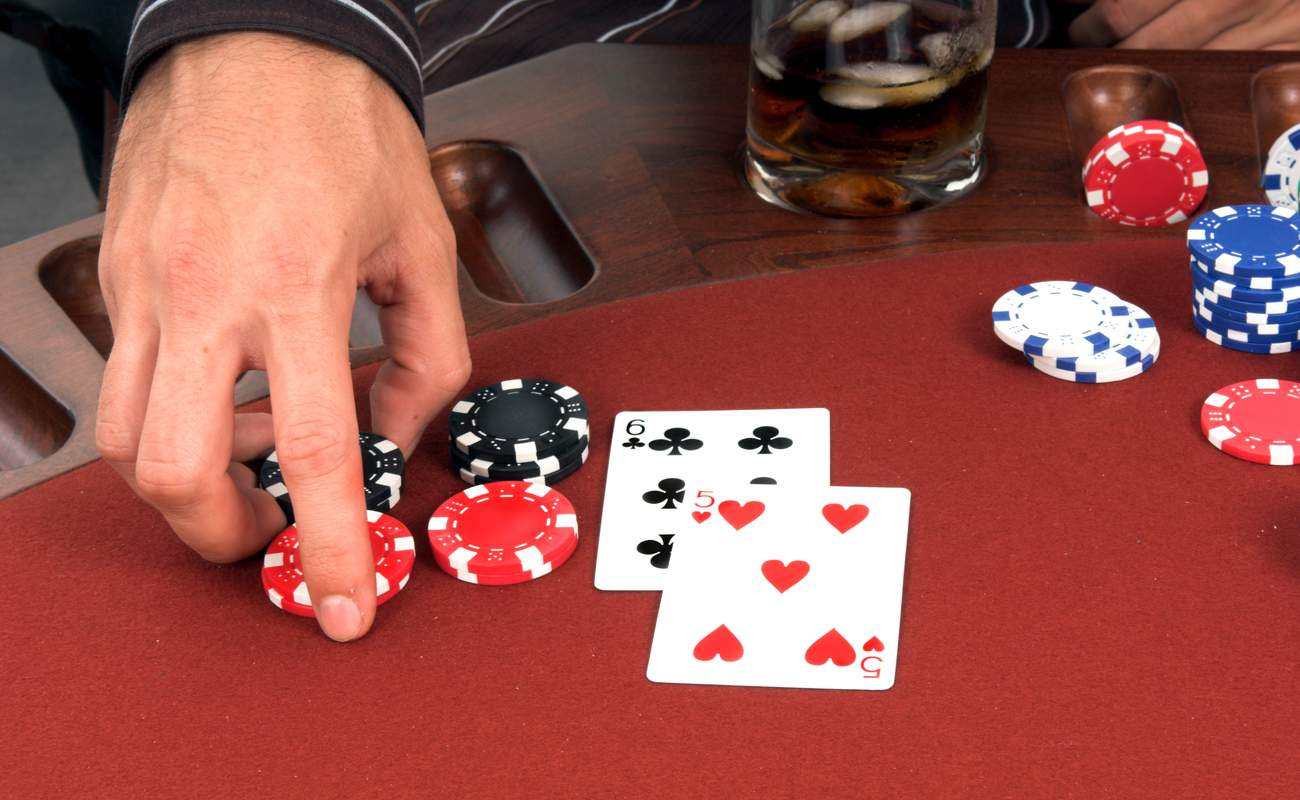
Split
To “split” means dividing your hand into two separate hands. You can only do this if your initial two-card hand has two cards of the same value — that is, a pair. Once you’ve indicated that you’d like to split, you place your additional bet, equal to your initial bet, outside your betting box. The dealer will separate your two cards and deal an additional card to each. The dealer will then place your two bets with each hand. The two hands will be played by the same player but independently of each other.
Some casinos have regulations about splitting. As mentioned, in a blackjack hand, the 10s, jacks, queens and kings all have a value of 10. Some casinos will let you split a hand with a 10 and a king, while others will only split hands of identical value and face — for example, two kings or two 10s. Most casinos are also reluctant to split a hand of two aces. With this hand, the odds of winning are too high; it wouldn’t be in the casino’s interest to take that gamble.
The signal to split also involves placing down the chips to double your stake. To split, you’d place an additional bet equal to your initial bet outside the betting box. You’d then raise two fingers in a V formation (avoid it looking like a rude gesture by making sure the palm of your hand is facing the dealer!) This tells the dealer that you’d like to “split,” and they’ll set up the blackjack table accordingly.
In an online game, you should have a button pop-up that says “split” if your initial two-card hand is a pair.
In general, you’re allowed to split twice in one game. This means you could end up with a maximum of three hands in one round! Of course, you’ll only be able to split twice if you receive another two-card hand containing a pair after the initial split.
Insurance
If the dealer’s face-up card is an ace, you can take out “insurance.” This involves you placing an additional bet that is half the value of your initial bet. If the dealer’s face-down card has a value of 10, you’re paid out 2 to 1. If not, you lose your insurance bet and continue with your hand and initial bet as per usual.
While it may sound like a worthwhile option when you see a dealer with an ace, experience will teach you that you lose your insurance more often than not. Therefore, players are encouraged to avoid opting for blackjack insurance. The reason why it is a bad idea is that there are only a finite number of 10-value cards in a pack. The odds that the dealer doesn’t have a 10-value card are higher than the odds that they do. If you have a hand with a 10, the chances are even slimmer that the dealer has a 10 in the hole.
If you’re playing at a casino where you can see all the players’ hands face-up and the dealer has an ace, you can see how many 10-value cards are on the blackjack table. If there are none, you’ll know that they are still in the pack and that there’s a bigger chance that the dealer has a 10.
There is no official signal for making an insurance bet. The dealer usually offers it if they have an ace as their face-up card. In a casino, this exchange is usually verbal.
In an online blackjack game, insurance is also offered if the dealer has an ace face-up in their initial hand. This is usually a yes or no option given to a player so that they can accept or decline the invitation.
Remember that each player at the table (real or virtual) is purely concerned with the dealer’s cards. That said, while players aren’t in competition with one another, you’ll always want to keep an eye on what cards you see revealed around the table because it will give you an indication of what is still left in the pack.
Bear in mind, though, that many land-based casinos use a “shoe” containing more than one deck of cards! Online blackjack games, on the other hand, are run by random number generator software (unless you’re playing a live version of the game with a dealer.)

Surrender
In some casinos, you may be given the option to surrender. This is when the dealer allows you to end the hand and only lose half your bet. This can only be done at the beginning of the hand. In some cases, you’re allowed to surrender after the dealer has seen their hand, while in others, you can only surrender before the dealer has checked their second card. As with insurance, in the long term, you could lose more from surrendering than if you’d played your hand.
Different Hands and Card Points
One of the distinguishing factors of a blackjack game is card values, where you aim to get as close to 21 as possible without going bust. It makes no difference whether you achieve that 21 total using five cards or two.
Card Points
The card points in blackjack are quite different from most other well-known card games. In blackjack, there are two main card points to remember. The first is that an ace has a value of either 1 or 11. This means that if your hand is an ace and a 6, for example, your score is either 7 or 17. You might hit and get a 5. In that case, your hand value is either 12 or 22. A value of 22 would make you bust, so for the remainder of the round, you’d consider your ace to be a 1 and you’d likely hit again. But if your third card were a 4 rather than a 5, then you’d have a hand value of 11 or 21. In this case, you’d use your ace as an 11 and have 21!
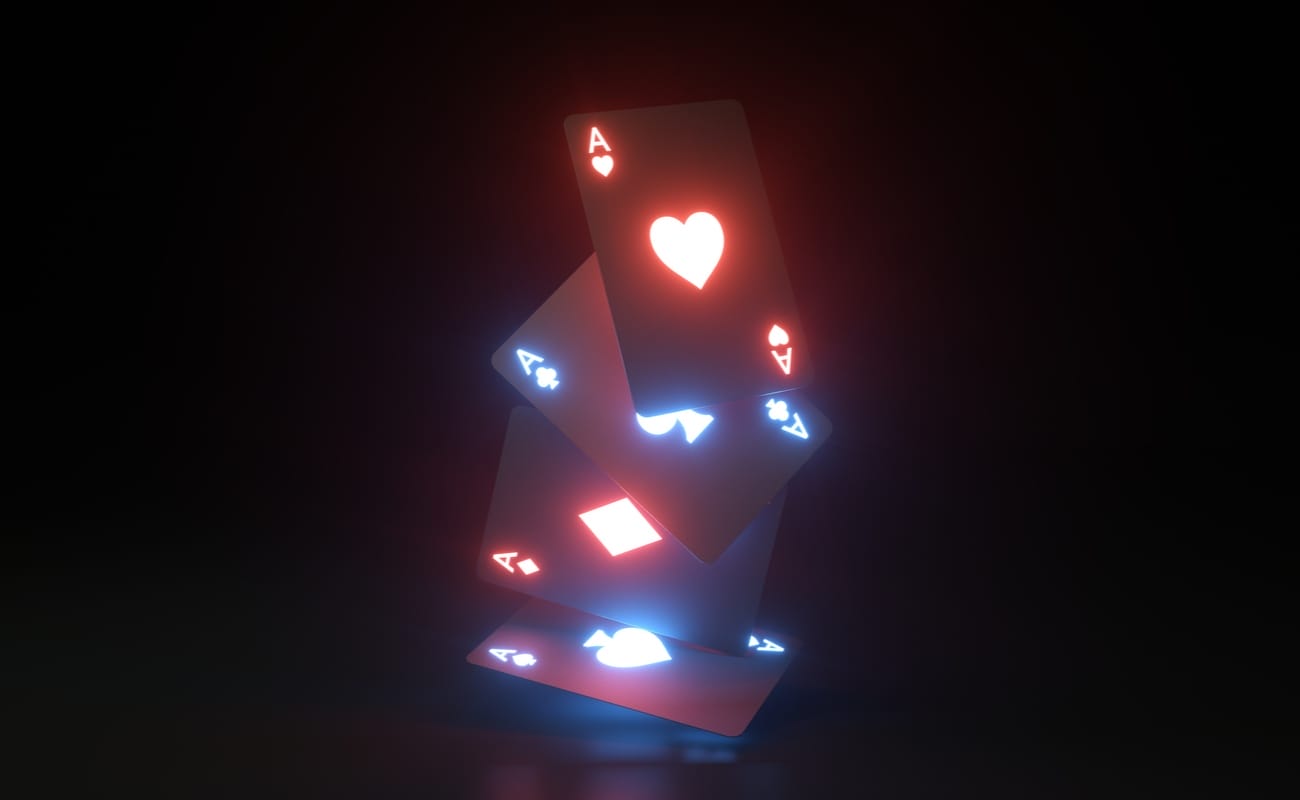
The difference between using your ace as a 1 or 11 is described by what is called soft or hard hands. A “soft” hand contains an ace that could value 11. The reason it is called a soft hand is that it allows flexibility not to fold, as you could change your ace’s value to 1. In a “hard” hand, there is either no ace or it is set to 1 (because 11 would make you go bust.)
In most casinos, the dealer is not allowed to hit for their own hand if they have 17 or higher. However, some do allow dealers to hit on a soft 17. In other words, if the dealer has an ace and a 6, they can still “hit” because the ace could just be 1.
The second main difference is the values of the face cards (jack, queen and king.) In blackjack, all the face cards have a value of 10. When playing with others at a blackjack table using the same deck, you’ll be able to judge the odds of receiving a 10 on a hit by seeing how many are currently in play. This is another reason why the odds of taking insurance against the dealer may seem wise. In the long run, though, this bet is ill-advised.
Different Hands
In blackjack, face values have no rank. In other words, a 21 formed with an ace and a jack is as strong as an ace and a 10 (and suits, of course, are ignored.) Some versions of blackjack place greater value on a two-card 21. Generally, however, if both the dealer and the player have 21, it is ruled a tie or push and the player’s bet is returned. If insurance was taken out, it pays out as a side bet.
It is often seen as more skillful to win a round with as few cards as possible, although there is no tangible difference to the end result. There is also no limit to the number of cards you can have in a hand. However, the moment your hand value is above 21, you’re bust and your bet is lost.
Blackjack Strategy
Blackjack is a simple game to learn, but just because there is no hand ranking doesn’t mean the game is played without a strategy. There are, in fact, numerous tips for playing blackjack (like how to beat the 21+3 side bet or Super 7 side bets) that will help you avoid losing your bet and instead know when to “hit” or “stand.” Learning how to play blackjack properly is the best way to enjoy this game with friends, family and the dealer. This section will help you create a basic blackjack strategy.

Basic Strategy
The most important thing to understand about blackjack is the odds. You don’t need to know them off by heart, but you should be aware of your chances of success with any given hand. In getting to 21, cards will not have any bias or inclination to help your cause. They are shuffled in a deck and dealt as consistently and randomly as possible.
Your 21 basic strategy should be quite methodical and conservative. As with learning to drive, soon you’ll know when you should “hit” or “stand” as if it were instinct. The most common way to develop your strategy is by familiarizing yourself with a blackjack chart. There are many charts available that give you advice on whether to “hit” or “stand,” depending on what’s in your hand and the dealer’s hand.
A blackjack chart will help you to minimize the house edge advantage. Different ones are nuanced to the size of the deck in play. Many have the dealer’s face-up card as the x-axis and the value of your hand as the y-axis. If you trace where the lines meet, you’ll find out whether it is advisable to “hit,” “stand,” “double down” or “split.” Numerous versions of the blackjack chart are available online — they’re a great way to understand the strength of your hand. For example, you’ll always “hit” if you have a 5 – 8. On the other hand, you’ll always “stand” if you have a hand that totals between 18 and 21. Anything less than that, you’ll probably play, depending on the dealer’s face-up card.
The blackjack chart will also help you when deciding on whether to double down or split. For example, if you get two 10s in your hand, you should stand, regardless of the dealer’s hand; if you get a double ace, you should “split” regardless of the dealer’s hand (although not all casinos allow this because it’s bad news for them!)
Once again, the more you practice with the sheet, the more you’ll get the gist of your blackjack strategy and how to approach risk.
Advanced Strategy
As with most card games, there are advanced strategies that leverage superb observation and memory. This can range from counting cards to merely being observant and memorizing the cards that are currently in play or that have been discarded. Common advanced strategies for blackjack include card counting, shuffle tracking and identifying concealed cards by remembering wear and tear.
Card counting is premised on the idea that high cards benefit the player and low cards, the dealer. Therefore, it can be used to assess whether the player or the dealer has an advantage on the next hand. Shuffle tracking, on the other hand, can be a bit more complex and dependent on a player’s skills. With shuffle tracking, you track a deck of cards as they are being shuffled as a way to track cards or sequences to try to get an edge. By carefully monitoring the dealer’s shuffles, you may be able to determine which cards land up at the top of the deck, ultimately guiding your betting based on your belief of what may be dealt next.
When used in conjunction with card counting, shuffle tracking can be quite beneficial, especially for more experienced blackjack players who have gone beyond the basic strategy of the game.
Most casinos cater to this by introducing more decks or by shuffling after every round. If you’re identified as a card counter, you may be blacklisted from a casino — and they are watching the tables! For the basics of blackjack, though, it’s not necessary to have an in-depth knowledge of an advanced strategy. With a cautious approach and an observant eye, you’ll know that the less risky a decision is, the better — and in this context, insurance can be very risky.
Betting in Blackjack
As with most card games in a casino, the ultimate objective is to win the jackpot by beating the dealer. A blackjack jackpot often depends on the version of the game you’re playing. In general, though, you’ll usually find a payout of 1:1 or 3:2. The days of the 10:1 blackjack jackpots are sadly a thing of the past!
The bet is, of course, always against the dealer, as this is your competitor. There are different approaches to blackjack betting, with most players developing their own strategy that works for them.
Your strategy will depend on how aggressive or conservative you like to bet. An aggressive strategy would be based on the Martingale system, according to which you double your bet after every hand you lose (not recommended for beginners!) A more conservative strategy would be based on the Oscar system, in which you raise your bet by one coin every time you win. If you lose, you keep the bet at the same amount.
Finding a betting approach that works for you may take time. Always remember to gamble responsibly, though, because you wouldn’t want to risk more than you can afford to lose.

Side Bets
If the blackjack jackpot is still too small for you, there are additional ways to make money from a hand. These are known as side bets. Insurance is an example of a side bet. Other examples include betting that the player’s initial hand will be a pair, that the initial hand totals 20 or even that the dealer’s upward-facing card is between the value of the player’s own two cards. The odds on these bets strongly favor the house, but they can be a fun way to maximize your earnings on a hand.
Blackjack Tournaments
Tournaments have grown in popularity, especially with the rise of the World Series of Poker. More blackjack players are entering tournaments online and at casinos in the hope of winning a large blackjack jackpot.
It’s important to note that when it comes to blackjack tournaments, you typically play against other players and not the casino. This is a key difference between tournaments and regular blackjack games. Tournaments can be played by many players and in multiple rounds with a set number of hands. Fortunately for players, the premise of the game remains unchanged and you can still make use of the standard blackjack strategy. Still, it is wise to adapt it where and when necessary.
For most blackjack tournaments, players enter with the same number of chips each. The top-performing players will progress to the next round, while those with the fewest chips are eliminated. The players will progress until the best player(s) remains to take home — or split — the pot. While there are several tournament formats, elimination tournaments (as described above) are the most common and preferred.
Home Blackjack
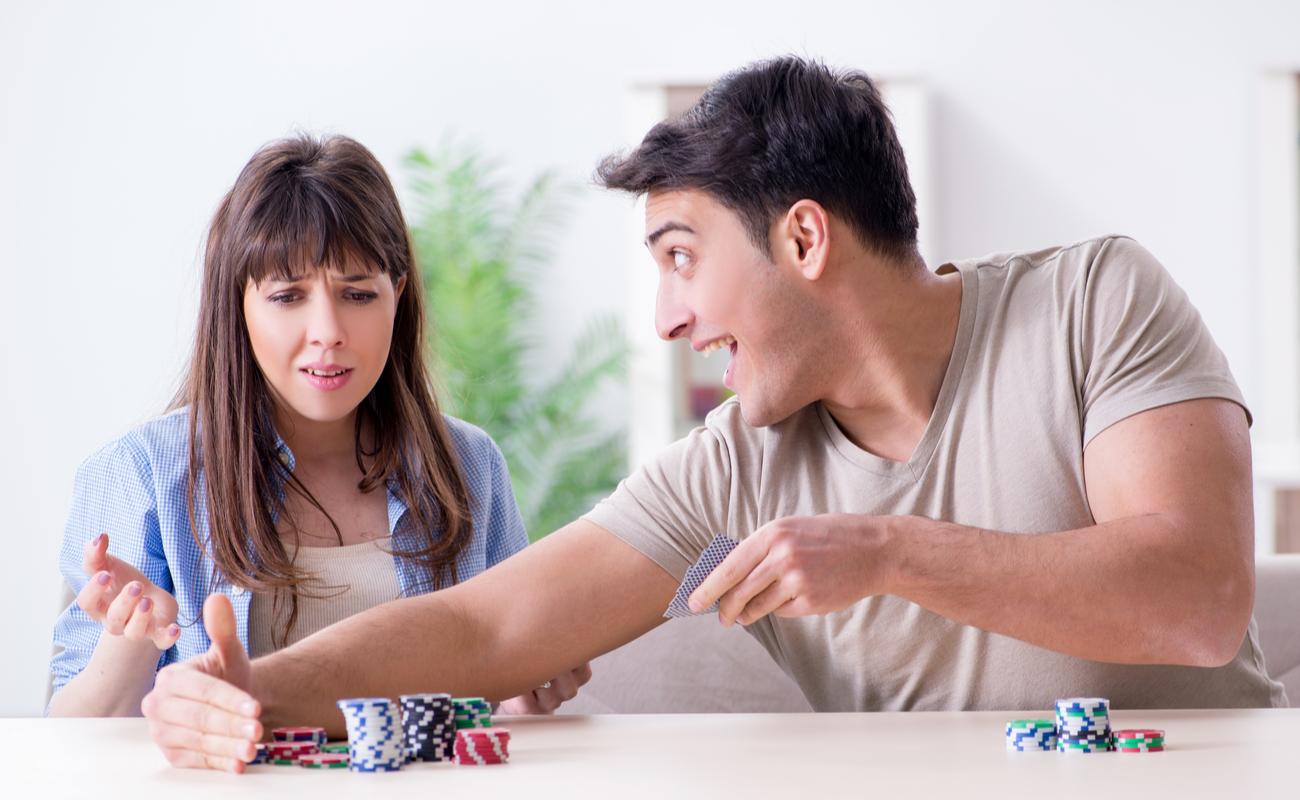
Blackjack has often been enjoyed among friends and family. A frequently asked question is how home blackjack works in terms of the dealer. Traditionally, as we’ve covered, blackjack is played against the dealer and many players can participate in the game at one time. If the dealer loses or goes bust, they need to pay out every player who hasn’t gone bust themself. This sounds like a daunting prospect unless the dealer has a lot of money! So how does home blackjack differ from casino and online blackjack?
The main difference here is that the dealer rotates so that everyone gets a turn. There are different approaches to selecting the dealer. In some games, players decide to remain as the dealer until they hit a losing streak, in which case they nominate someone else. In most cases, though, the dealer is the first person to draw an ace.
In terms of the gameplay, usually, each player receives their first card face-down. This includes the dealer. The bets are then placed, with the dealer placing theirs last. The second card is then dealt to everyone face-up. If the dealer has blackjack 21, the hand ends and the dealer takes the pot. If not, each player tries to beat the dealer. In most home games, there are no double-down bets or splits. This is mainly for simplicity and to ensure that no one dealer loses too much money in one go.
Video Blackjack
Video blackjack is a computerized version of blackjack that you’ll often find in casinos. Players have a smaller chance of winning, but the barrier to entry is far lower compared to the bets at a blackjack table.
Video blackjack generally uses one 52-card deck. The cards are shuffled after each hand by a random number generator, so there’s no point trying to remember what’s gone before. While the odds might be lower, some video blackjack games do pay out large sums of money. What’s more, if you’re interested in refreshing your blackjack skill set before hitting the live tables (land-based or online,) it’s a cost-effective way to make your mistakes before taking your seat at the blackjack table.
Online Blackjack
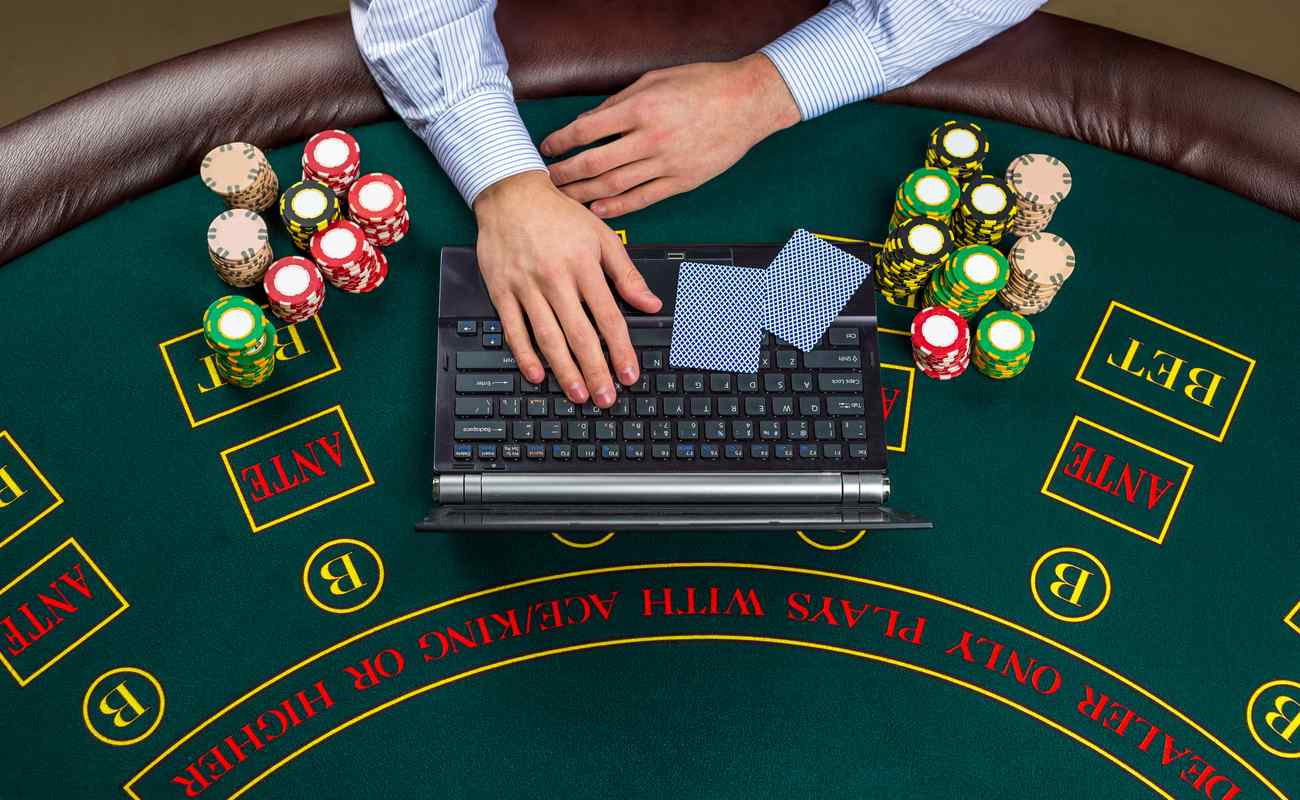
Blackjack has spawned many different variations since its humble beginning as veintiuna! Most do not differ much from the core principle of getting as close to 21 as possible. You’ll find many of the different casino blackjack rules are nuanced on the types of bets you can make or at what point you’re allowed to double down or split.
With many casinos offering online casino games, blackjack has well and truly reached a global market. Like poker, casino blackjack rules and online blackjack rules are slightly different — less in terms of the game itself than the bets and payouts.
What are the main differences between blackjack as an online game or in a casino? The first difference relates to scale. Online games can scale more than in a casino, so you can play a lot more blackjack online. Some players open up multiple games at once in different tabs. This helps to maximize your earnings in the time that you’re playing (although you also increase your risk of losing.)
Online casinos also remove some of the human aspects of blackjack that may help you decide whether to hit or stay. The dealer is computerized, so there are no tell signs that they have a weaker hand.
For people who are new to blackjack, casinos might be a more intimidating space to learn than online. Online blackjack tables are cheaper to play. This means you can get to know the rules of the game thoroughly and develop your strategy without losing a lot of money. It really is a great online casino game to familiarize yourself with.
Another benefit of playing online blackjack is that you can use a blackjack chart while you play. This is a fantastic way to train yourself to understand how to play the different hands and how to play against the dealer. After a while, you’ll be familiar with most of the scenarios in which to hit, stand, double down or split. From there, you can challenge your friends or take your new-found talent to the casino for the chance to score big!
In many ways, online blackjack is where blackjack players should start. A lot of players prefer the gameplay experience of online compared to in-person; some enjoy the speed of the game online much more than that at the casino tables. Of course, when you’re ready, you can always check out the growing choice of live dealer blackjack titles that game developers, including Evolution, are producing! These combine the convenience of online blackjack with a live dealer environment in which you have a real human dealer running the show.
Blackjack Etiquette
Here are a few quick tips on how to behave at a blackjack table.
Know the Rules
Before joining a blackjack table, make sure you are familiar with the basic rules of the game. Understanding the gameplay and procedures will help you interact smoothly with the dealer and fellow players.
Respect the Dealer
Treat the dealer with courtesy and respect. They are responsible for maintaining the flow of the game and enforcing the rules. Avoid directing any frustration or blame towards the dealer for unfavorable outcomes.
Use Appropriate Hand Signals
To communicate your decisions to the dealer, use proper hand signals rather than verbal cues. This helps maintain clarity and consistency in the game. Common hand signals include tapping the table for a “hit” and waving your hand horizontally to indicate a “stand.”
Avoid Phone Usage
Using your mobile phone at the blackjack table can be distracting to both yourself and other players. It’s considered polite to refrain from excessive phone usage, including texting, talking or browsing, while actively participating in the game.
Respect Personal Space
Blackjack tables can be crowded, so be mindful of personal space. Avoid leaning on or touching other players or their chips. Give everyone sufficient room to comfortably play their hands.
Don’t Touch the Cards
Once the cards are dealt, avoid touching them. It is the dealer’s responsibility to handle the cards and manage the game. Touching the cards is generally not allowed in order to maintain fairness and prevent potential cheating.
Manage Your Chips Efficiently
Keep your chips neatly stacked and organized in front of you. This allows the dealer and other players to easily see your chip count and helps prevent confusion during betting and payouts.
Be Aware of Your Actions
Pay attention to the game and avoid unnecessary delays. Act promptly when it’s your turn to make a decision. Excessive hesitation or time-consuming actions can disrupt the flow of the game and frustrate other players.
Control Your Emotions
Maintain a calm and composed demeanor, regardless of whether you’re winning or losing. Avoid outbursts of frustration, excessive celebrations or any disruptive behavior that may impact the atmosphere at the table.
Tip the Dealer
While not mandatory, it’s customary to tip the dealer when you are winning or receive exceptional service. Tipping is a gesture of appreciation and can be done by placing a chip or a small bet for the dealer.
Play Casino Games at Borgata Online
Once you’re ready to put these blackjack tips and tricks into practice, you’ll appreciate the ease and convenience of an online casino. There are a host of blackjack games available to play at Borgata Online if you want to experience the game that Miguel de Cervantes wrote about more than 400 years ago!
Whether you’re a beginner or an experienced player, the selection of casino table games at Borgata Online offers something for everyone. So, for the best casino games, including online slots and live casino action, come and enjoy access to some fantastic titles when you register.
